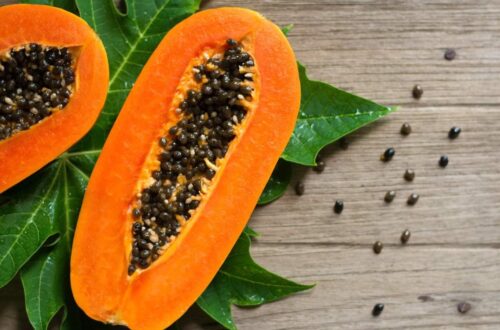Pest Control
 Pest control defines the management or regulation of pests, which are adversely affected human activities. these pests can include insects, rodents, birds, and other animals that damage crops, transmit diseases, or infest buildings and structures. pest control measures are mandatory to prevent Food supplies, Human health, food supplies, property, environment. The effectiveness and method of pest control have evolved, influenced by advancements in technology, science, technology, and social factors.
Pest control defines the management or regulation of pests, which are adversely affected human activities. these pests can include insects, rodents, birds, and other animals that damage crops, transmit diseases, or infest buildings and structures. pest control measures are mandatory to prevent Food supplies, Human health, food supplies, property, environment. The effectiveness and method of pest control have evolved, influenced by advancements in technology, science, technology, and social factors.
Throughout history, humans have resolved various pest problems, and developed strategies to manage them. In ancient times, people used a simple method to prevent pests such as handpicking insects off plants or using natural predators to control pest populations. the domestication of animals also plays a vital role in pest management, as cats were valued for their ability to catch rodents while chickens were kept to control pest control.
 As human society becomes more organized and agriculture develops, pest control becomes increasingly important for ensuring food security and preventing crop losses. Early agricultural civilizations such as Syberiun and Egyptians used techniques such as irrigation, crop rotation, and the use of natural substances such as sulfur, and arsenic to protect their crop from pests and disease.
As human society becomes more organized and agriculture develops, pest control becomes increasingly important for ensuring food security and preventing crop losses. Early agricultural civilizations such as Syberiun and Egyptians used techniques such as irrigation, crop rotation, and the use of natural substances such as sulfur, and arsenic to protect their crop from pests and disease.
the development of organized societies and the growth of trade and commerce facilitated the spread of pests across the region and continent. The expansion of empires and trade routes led to the introduction of new pests to different parts of the world, often with devastating consequences for local ecosystems and economies. For example, the spread of the Mediterranean fruit fly (Ceratitis capitata) from its native range in Africa to other parts of the world has caused significant damage to fruit crops and led to the implementation of extensive pest control measures.
The Industrial Revolution brought about a significant role in pest control methods, as new technology and chemicals were developed to combat pests more effectively. the discovery of synthetic insecticides such as DDT (dichlorodiphenyltrichloroethane) in the 20th century revolutionized pest control practices and led to dramatic reductions in insect populations in many parts of the world. However, the widespread use of chemical pesticides also raised concerns about their environmental impact and potential risks to human health.
In the mid-20th century, the emergence of resistance in pest populations and the accumulation of pesticide residues in the environment prompted a reevaluation of pest control strategies. Integrated Pest Management (IPM) emerged as a holistic approach to pest control that emphasizes the use of multiple tactics, including biological, cultural, and chemical methods, to manage pests sustainably. IPM aims to minimize reliance on chemical pesticides and reduce their environmental impact while maintaining effective pest control.
pesticide residues in the environment prompted a reevaluation of pest control strategies. Integrated Pest Management (IPM) emerged as a holistic approach to pest control that emphasizes the use of multiple tactics, including biological, cultural, and chemical methods, to manage pests sustainably. IPM aims to minimize reliance on chemical pesticides and reduce their environmental impact while maintaining effective pest control.
Biological control, or the use of natural enemies to regulate pest populations, has become an important component of IPM programs. Biological control agents can include predators, parasites, and pathogens that attack pest species and help to keep their populations in check. For example, the introduction of parasitic wasps to control aphids in crops has proven to be an effective and environmentally friendly pest control strategy.
 Cultural practices such as crop rotation, sanitation, and habitat manipulation are also key components of IPM. By disrupting pest life cycles and reducing the availability of food and shelter, cultural practices can help to prevent pest infestations and minimize the need for chemical pesticides. Additionally, the use of resistant crop varieties and non-chemical pest control methods such as traps and barriers can further enhance the effectiveness of IPM programs.
Cultural practices such as crop rotation, sanitation, and habitat manipulation are also key components of IPM. By disrupting pest life cycles and reducing the availability of food and shelter, cultural practices can help to prevent pest infestations and minimize the need for chemical pesticides. Additionally, the use of resistant crop varieties and non-chemical pest control methods such as traps and barriers can further enhance the effectiveness of IPM programs.
In recent years, there has been growing interest in alternative and sustainable pest control methods as concerns about pesticide resistance, environmental pollution, and human health risks continue to escalate. Organic farming practices, which emphasize soil health, biodiversity, and natural pest control mechanisms, have gained popularity as consumers seek out food products that are produced without synthetic pesticides.
Advancements in technology have also revolutionized pest control practices, with the development of new tools and techniques for monitoring and managing pest populations. Remote sensing technologies, such as drones and satellites, can be used to detect pest infestations and assess crop health from a distance, allowing farmers to target pest control efforts more effectively. Additionally, genetic engineering techniques such as gene editing offer the potential to develop pest-resistant crop varieties and novel control strategies that are both effective and environmentally sustainable.
Despite these advancements, pest control remains a complex and challenging endeavor, as pests continue to evolve and adapt to changing environmental conditions and control measures. Climate change, globalization, and other factors are expected to exacerbate pest problems in the future, underscoring the need for continued innovation and collaboration in pest management efforts.



